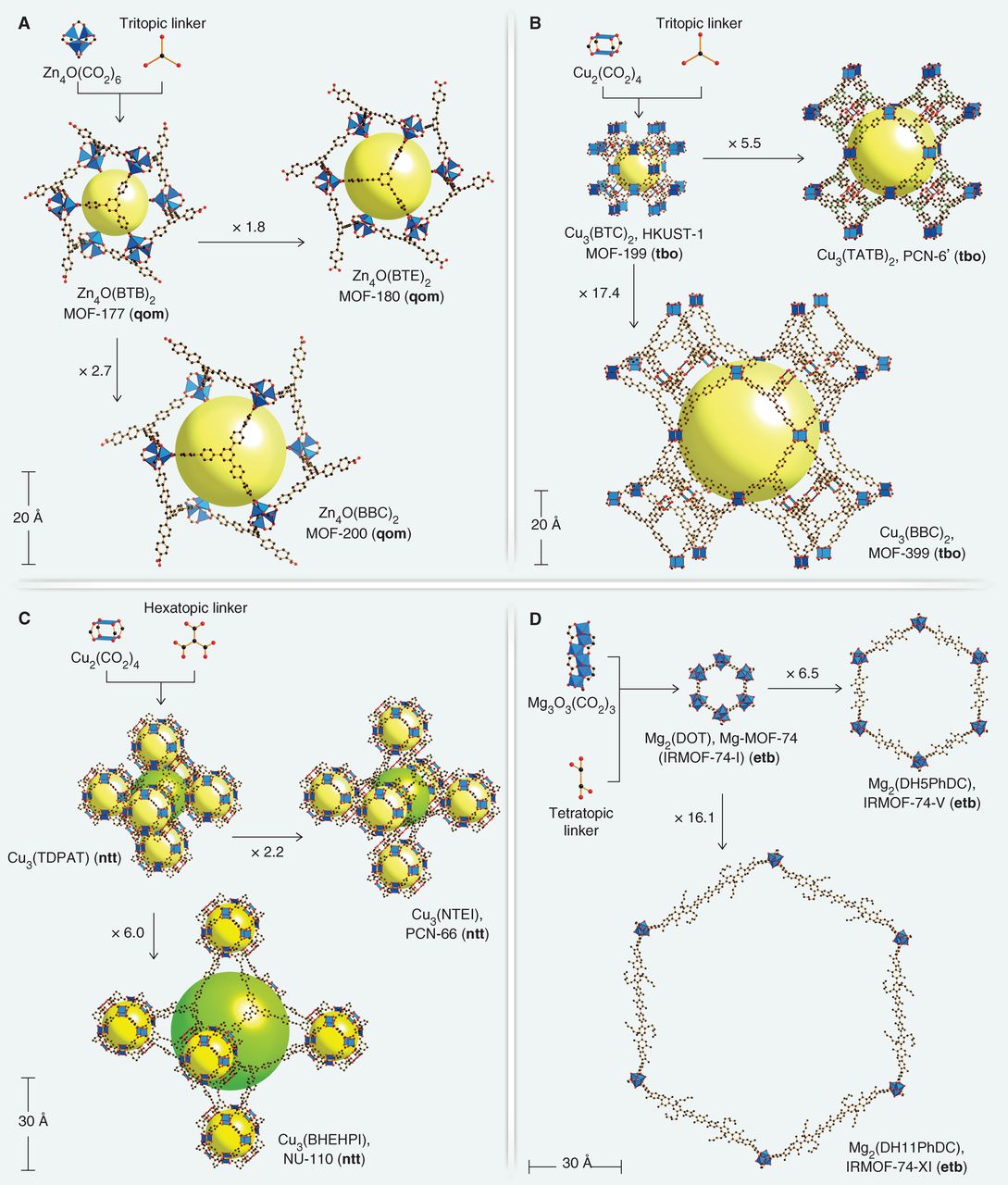A metal-organic framework (MOF) is a material consisting of an organic framework (ligand) with metal ions or clusters coordinated to the ligand sites. The combination of two or more different types of building blocks leads to MOFs with interesting and tunable properties, including good chemical and thermal stability, high porosity, and large surface areas. MOFs have attracted much attention in recent years because of their potential for use in gas storage, separation, catalysis, and sensing applications.
Metal-organic frameworks are made up of two types of building blocks: organic ligands and metal ions or clusters. Ligands are molecules that can bind to metal ions through electrostatic interactions; common ligands used in MOF synthesis include carboxylates, phosphates, and amines. Metal ions or clusters serve as nodes that connect the ligands together; common metals used in MOF synthesis include aluminum, zinc, cobalt, iron, manganese, copper, nickel, and titanium. By varying the type and number of organic ligands and metal nodes used in synthesis, it is possible to tune the properties of MOFs for specific applications. For example, increasing the number of carboxylate groups on a ligand will increase its ability to bind to aluminum nodes; this results in a more thermally stable MOF.
MOFs can be synthesized using several different methods; common methods include solvothermal reactions and hydrothermal reactions. In a solvothermal reaction , all reactants are dissolved in a solvent before being placed into a reaction vessel . The resulting solution is then heated at elevated temperatures until crystallization occurs . In a hydrothermal reaction , water is used as both the solvent and reactant ; this method is typically used when synthesizing highly porous MOFs .
Once synthesized , MOFs can be characterized using several techniques including X-ray powder diffraction (XRPD), nitrogen sorption analysis , ultraviolet – visible spectroscopy (UV-Vis) , nuclear magnetic resonance spectroscopy (NMR) , infrared spectroscopy (IR) , Raman spectroscopy , thermogravimetric analysis (TGA) , scanning electron microscopy (SEM) , transmission electron microscopy (TEM). These techniques allow for the determination of key physical parameters such as pore size distribution surface area crystal structure composition .
XRPD is commonly used to determine crystallinity unit cell dimensions atomic coordinates ; however it only provides information about long-range order . To complement XRPD data smaller scale techniques such as SEM or TEM may be employed which provide information about short range order . NMR can also be used to study short range order by determining spin–spin correlations however it generally requires more sophisticated equipment than SEM or TEM . IR may also be employed to study functional groups present within the framework however this technique does not generally provide information aboutframework topology .
UV-Vis spectroscopy can give insight into electronic transitions within chromophores located inside the pores while TGA gives information about weight loss due decomposition processes occurring at elevated temperatures . Nitrogen sorption analysis provides perhaps the most useful characterization data as it allows for determination of Brunauer–Emmett–Teller(BET) surface area total pore volume micropore volume mesopore volume ; this technique works by measuring physisorption adsorption desorption hysteresis saturation pressure BET equation t -plot Dubinin – Astakhov equation Harkins – Jura equation BJH method DFT method MD simulation Graphene oxide Carbon nanotubes Porous carbon Ion exchange resins Silica gel


